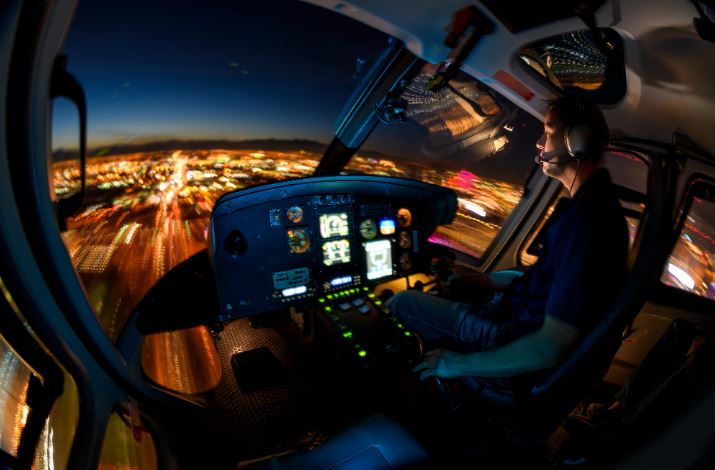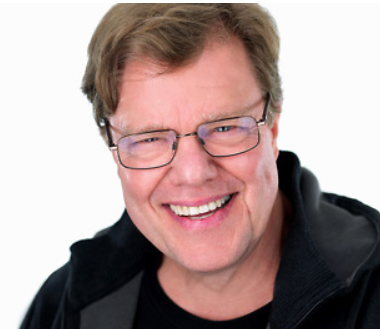Posted this on our Instagram account this past week and got a few questions on the placement of flashes, technique, etc. So, here we go.
Biggest problems shooting a pic like this? Control of light. Not a situation for a bounce flash. You’ll illuminate the entire interior of the chopper, and it will look blah and awful and flat and reflect the entire interior in the windshield.
Also important: Control of power. As in, don’t blind the pilot. This has consequences beyond the taking of a bad photo.
There are three
SB-5000 flashes at play here, all controlled with a
WR-R10 controller. One is on the floorboard, camera left. You can see it defines the floor and gives what would ordinarily be a black hole of exposure some texture and detail.
Another is the key light for the pilot. It is hidden behind the instrument panel on the far right, clamped to a metal brace over there.
And the third, in this iteration is literally just below the camera, putting a glow on the empty seat and the dashboard. They are all gelled, as you can see the colors they are producing.
This picture did not have a promising beginning.

Above, the intrepid
Andrew Tomasino sits in the pilot seat, illuminated, badly, by the three aforementioned flashes. The hardest part of this, as we all know, is trying to sort out placement and power early in the day, when the Nevada sun is nuking everything in sight. You can only make guesses at this point, at least, that’s all I’m capable of. We couldn’t move the chopper inside, so we did the best we could. The placement of the flash on the right, that hot spot, was, of course, a no-no, and we moved it.

The first test flight, as you can see above, was predictably awful. Sky too bright, lights still not powered right, or in the completely right place. Here’s where modern camera tech saves your butt. If these were overpowered, in a manual sense, as they would have been back in the days before radio controls over flash exposure, we literally would’ve landed the chopper and made adjustments. Now, with radio-controlled TTL flash, and an LCD, I can make judgment calls and dial power right from the camera, as I see fit. It’s amazing, to be honest, how these kinds of developments make our lives in the field easier.
The readout on the banner pic is ISO 400, f/11 at 1.6 shutter speed.
Nikon D850 with an
8-15 Nikkor fisheye zoom, handheld. I am sitting behind the passenger seat, draping my arms over it, hugging it, actually, and using it as a flyboy tripod. Now, the iteration below is shot straight up at 1/2 second, so the world outside the window blurs a lot less. I have to say, when that 8-15mm fisheye zoom was introduced, I thought, honestly, it was a nutty idea and would be a lens I would never really gravitate to. Now, I use it a lot. In a situation like this, it is invaluable.

This still could have been fine-tuned better, but once in the air, you are limited a bit just by the fact of being in a flying machine. The highlight on the passenger seat, for instance, could have been finessed better, and we had to burn it down a bit in post. Andrew kept messing with the position of that light during the flight, as it was clamped with a
Manfrotto Friction Arm, and thus movable. The happy accident of the key light for the pilot is it illuminates the door next to him and separates him from what would have been darkness. Downside? (And there’s always a downside, folks.) It also splashes some light on Andrew, sitting behind the pilot. We could make that disappear but left it there. I mean, it’s ok to have a passenger, right?
But overall, as a shot in the dark, as they say, we came away with a picture.
Many thanks to the crews and pilots of
FlyNYON Vegas! More tk...
 Above, the intrepid Andrew Tomasino sits in the pilot seat, illuminated, badly, by the three aforementioned flashes. The hardest part of this, as we all know, is trying to sort out placement and power early in the day, when the Nevada sun is nuking everything in sight. You can only make guesses at this point, at least, that’s all I’m capable of. We couldn’t move the chopper inside, so we did the best we could. The placement of the flash on the right, that hot spot, was, of course, a no-no, and we moved it.
Above, the intrepid Andrew Tomasino sits in the pilot seat, illuminated, badly, by the three aforementioned flashes. The hardest part of this, as we all know, is trying to sort out placement and power early in the day, when the Nevada sun is nuking everything in sight. You can only make guesses at this point, at least, that’s all I’m capable of. We couldn’t move the chopper inside, so we did the best we could. The placement of the flash on the right, that hot spot, was, of course, a no-no, and we moved it.
 The first test flight, as you can see above, was predictably awful. Sky too bright, lights still not powered right, or in the completely right place. Here’s where modern camera tech saves your butt. If these were overpowered, in a manual sense, as they would have been back in the days before radio controls over flash exposure, we literally would’ve landed the chopper and made adjustments. Now, with radio-controlled TTL flash, and an LCD, I can make judgment calls and dial power right from the camera, as I see fit. It’s amazing, to be honest, how these kinds of developments make our lives in the field easier.
The readout on the banner pic is ISO 400, f/11 at 1.6 shutter speed. Nikon D850 with an 8-15 Nikkor fisheye zoom, handheld. I am sitting behind the passenger seat, draping my arms over it, hugging it, actually, and using it as a flyboy tripod. Now, the iteration below is shot straight up at 1/2 second, so the world outside the window blurs a lot less. I have to say, when that 8-15mm fisheye zoom was introduced, I thought, honestly, it was a nutty idea and would be a lens I would never really gravitate to. Now, I use it a lot. In a situation like this, it is invaluable.
The first test flight, as you can see above, was predictably awful. Sky too bright, lights still not powered right, or in the completely right place. Here’s where modern camera tech saves your butt. If these were overpowered, in a manual sense, as they would have been back in the days before radio controls over flash exposure, we literally would’ve landed the chopper and made adjustments. Now, with radio-controlled TTL flash, and an LCD, I can make judgment calls and dial power right from the camera, as I see fit. It’s amazing, to be honest, how these kinds of developments make our lives in the field easier.
The readout on the banner pic is ISO 400, f/11 at 1.6 shutter speed. Nikon D850 with an 8-15 Nikkor fisheye zoom, handheld. I am sitting behind the passenger seat, draping my arms over it, hugging it, actually, and using it as a flyboy tripod. Now, the iteration below is shot straight up at 1/2 second, so the world outside the window blurs a lot less. I have to say, when that 8-15mm fisheye zoom was introduced, I thought, honestly, it was a nutty idea and would be a lens I would never really gravitate to. Now, I use it a lot. In a situation like this, it is invaluable.
 This still could have been fine-tuned better, but once in the air, you are limited a bit just by the fact of being in a flying machine. The highlight on the passenger seat, for instance, could have been finessed better, and we had to burn it down a bit in post. Andrew kept messing with the position of that light during the flight, as it was clamped with a Manfrotto Friction Arm, and thus movable. The happy accident of the key light for the pilot is it illuminates the door next to him and separates him from what would have been darkness. Downside? (And there’s always a downside, folks.) It also splashes some light on Andrew, sitting behind the pilot. We could make that disappear but left it there. I mean, it’s ok to have a passenger, right?
But overall, as a shot in the dark, as they say, we came away with a picture.
Many thanks to the crews and pilots of FlyNYON Vegas! More tk...
This still could have been fine-tuned better, but once in the air, you are limited a bit just by the fact of being in a flying machine. The highlight on the passenger seat, for instance, could have been finessed better, and we had to burn it down a bit in post. Andrew kept messing with the position of that light during the flight, as it was clamped with a Manfrotto Friction Arm, and thus movable. The happy accident of the key light for the pilot is it illuminates the door next to him and separates him from what would have been darkness. Downside? (And there’s always a downside, folks.) It also splashes some light on Andrew, sitting behind the pilot. We could make that disappear but left it there. I mean, it’s ok to have a passenger, right?
But overall, as a shot in the dark, as they say, we came away with a picture.
Many thanks to the crews and pilots of FlyNYON Vegas! More tk...






